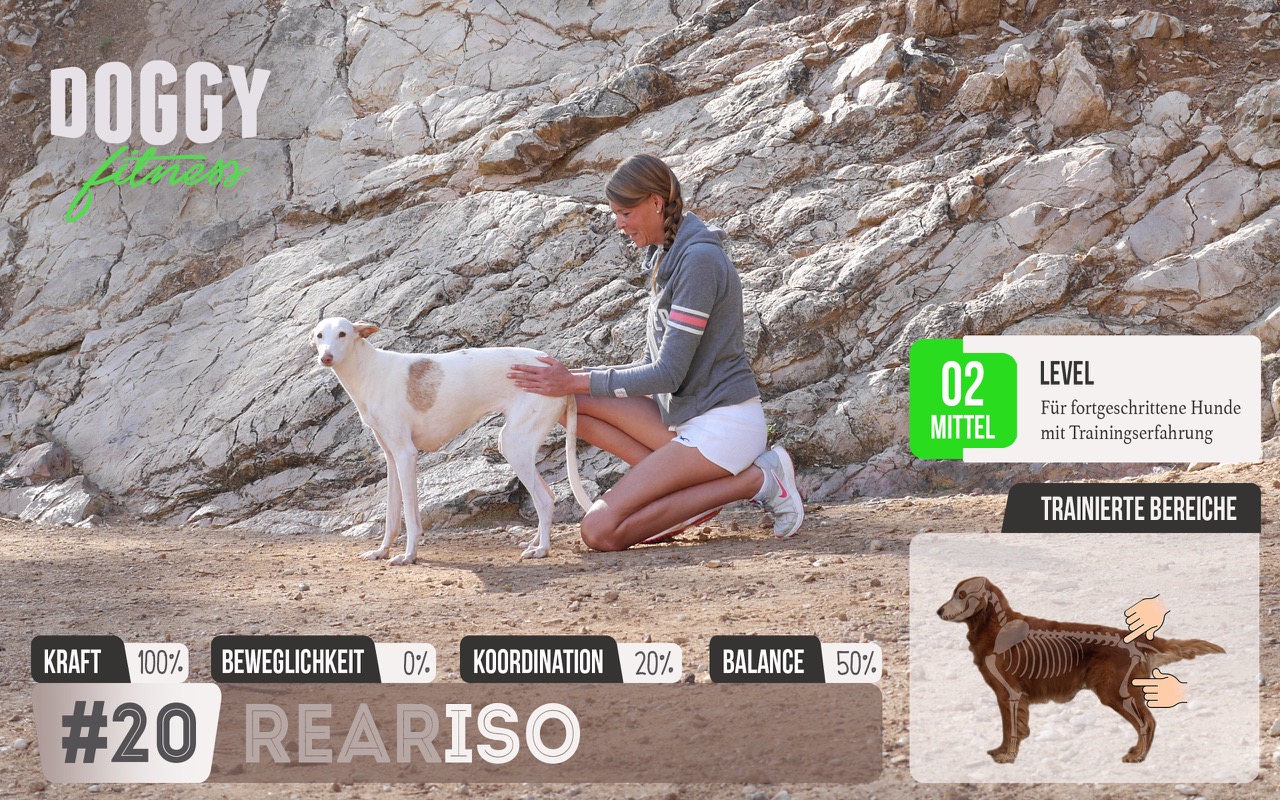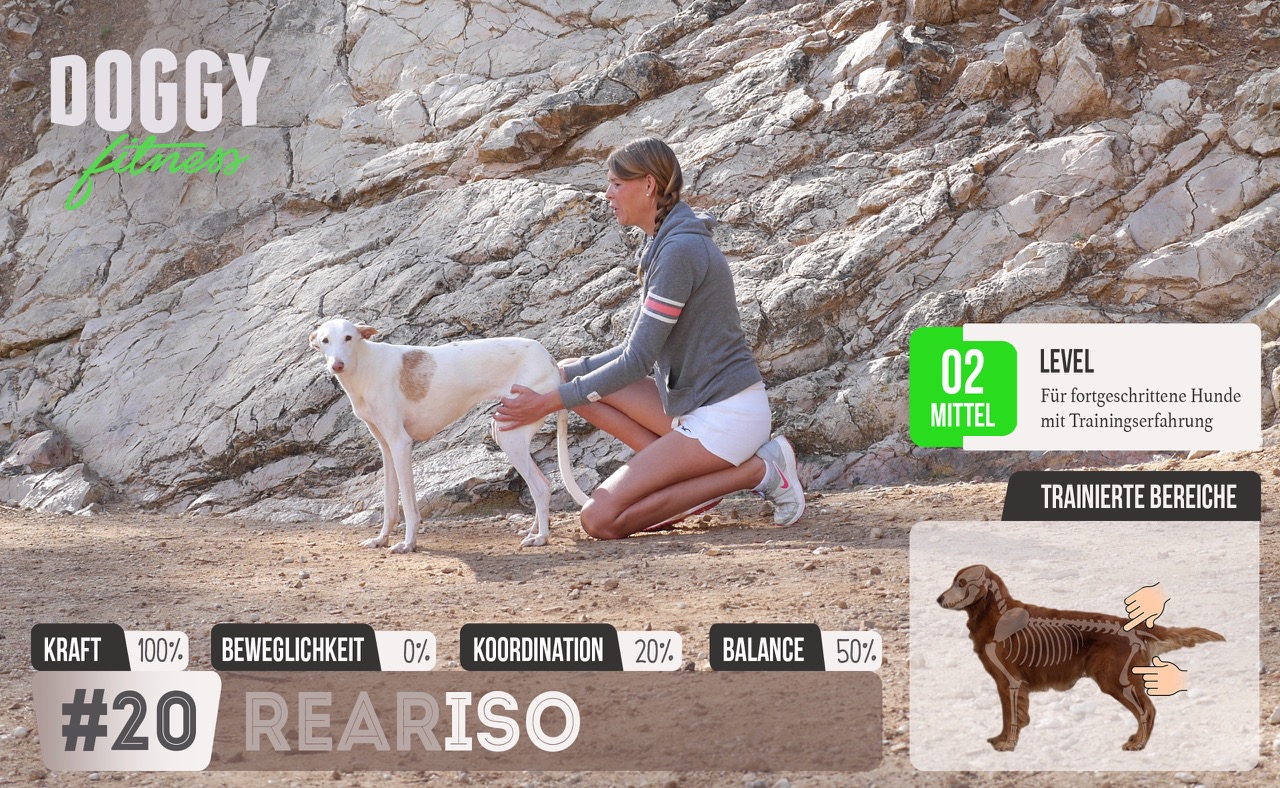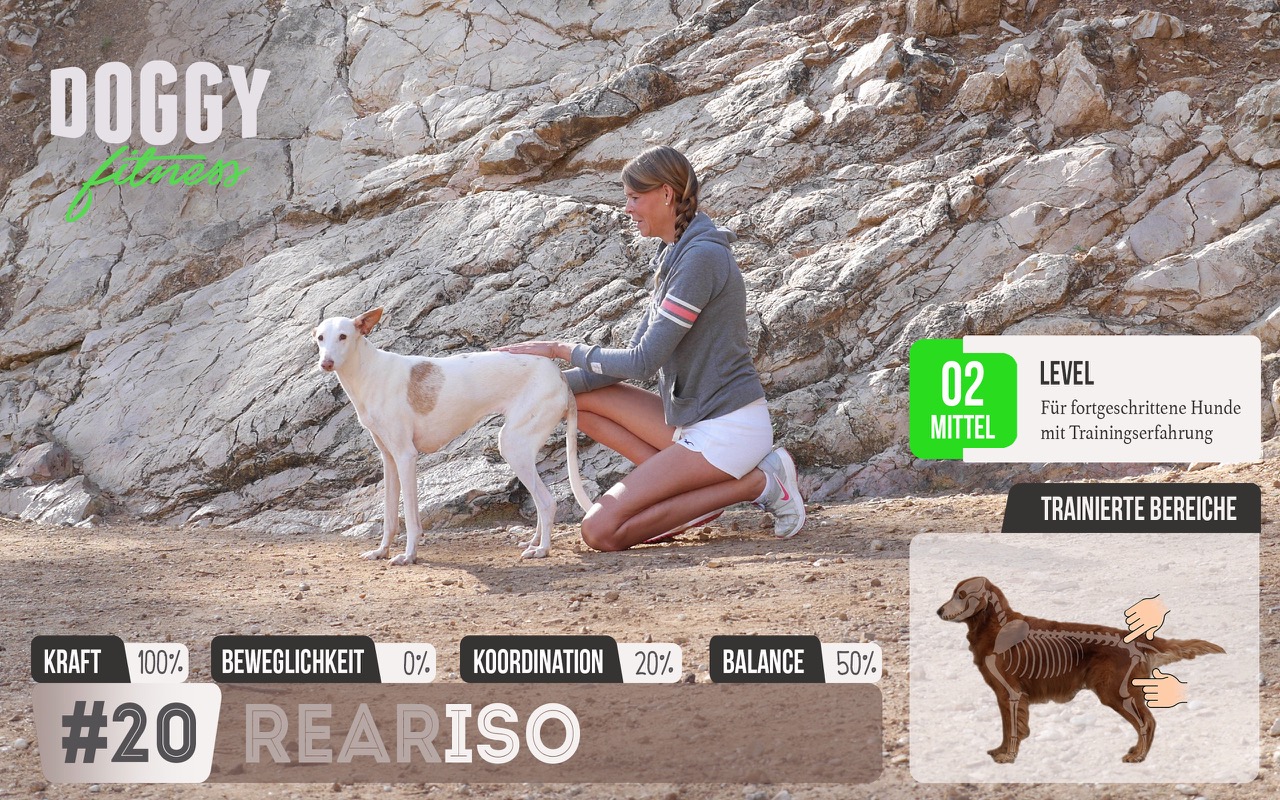Muscle Building Dog Muscle Building Dog Muscle Building Dog Muscle Building Dog
Isometric training is often underestimated by dog owners in exercise therapy and also in sport dog training because “you see so little”. A lot happens in the process and isometric training is extremely effective. I think it’s especially great because you can also use it if a dog can’t move a joint, for example, but you still want to train the affected run, or counteract muscle loss. Great, therefore, for all joint diseases.
Isometric exercises – an all-rounder
I also work with many different isometric exercises for the entire body in my classes. They are very easy for the dog to learn, you do not need any accessories and you can do them anytime and anywhere. In addition, isometric exercises are extremely effective and work in multiple ways. You can train your dog’s muscle development and strength, but also body awareness, body perception in space, balance and coordination. But what does isometric training actually mean?
Isometric training – this is how it works!
Isometric exercises are a special form of strength training because they tense the muscles without requiring any active muscle or joint movement. The dog works purely against the pressure you create with one hand or against gravity. Therefore, the training is also so perfect for dogs with stiffened joints, or those who have pain during a joint movement. Also for dogs with neurological diseases and paralysis they help very well to become mobile again and to perceive the body.
However, isometric training is also used specifically for sporting dogs, as well as for older dogs. In short, every dog benefits from training. And what looks so simple and like so little is extremely effective – and also exhausting for your dog.
You can use these exercises with any dog and there is no condition where they are taboo.
Isometric training for the hind legs and lower back
From my courses today I present you the exercise Rear Iso. This involves training the lower back and hind legs by means of isometric training.
Exercise #20 REAR ISO
Effect:Strengthening the muscles and strength of the hind legs and lower back. At the same time, balance and coordination are trained. With isometric exercises you train the muscles very effectively. It is a special form of strength training, because you tense the muscles without having to move them or a joint to do it. Your dog is working against hand resistance or gravity.
When not: No restriction
Execution:
Your dog is standing on non-slip, level ground. You kneel behind your dog.

1st position
Crouch behind your standing dog and place your hands on the sides of his thighs. You are looking in the same direction. Apply light pressure to the thigh with your left hand until you feel your dog tense the muscles and resist. Hold this position for the duration indicated in the training recommendation without rebounding or increasing pressure. Slowly release and apply light pressure to the other thigh with your right hand until you again feel your dog tense the muscles and counter. Hold this position for as long as indicated in the exercise recommendation and then slowly release.

2nd position:
Next, embrace the thighs in front. Pull very lightly in your direction, as if you were trying to pull your dog toward you, until you notice your dog countering. Hold the position for the indicated duration and release again.

3rd position
Now place your hands flat on your dog’s lower back/butt as if you were pushing him into the seat. Apply light downward pressure until you feel your dog resist, and hold again for the duration indicated in the plan. Then slowly let go again.
It is important that the pressure you apply is very fine and never happens in a jerky way. Give your dog a chance to loosen up in between.
Training Recommendation:
Frequency: 3-4 x weekly Repetitions: 3 x per grip Duration: 3 sec. each. Per handle
As the workout progresses, you can gradually increase the number of repetitions and the duration of the exercises.
Dieser Beitrag ist auch verfügbar auf:
Français (French)
Deutsch (German)
Español (Spanish)
















